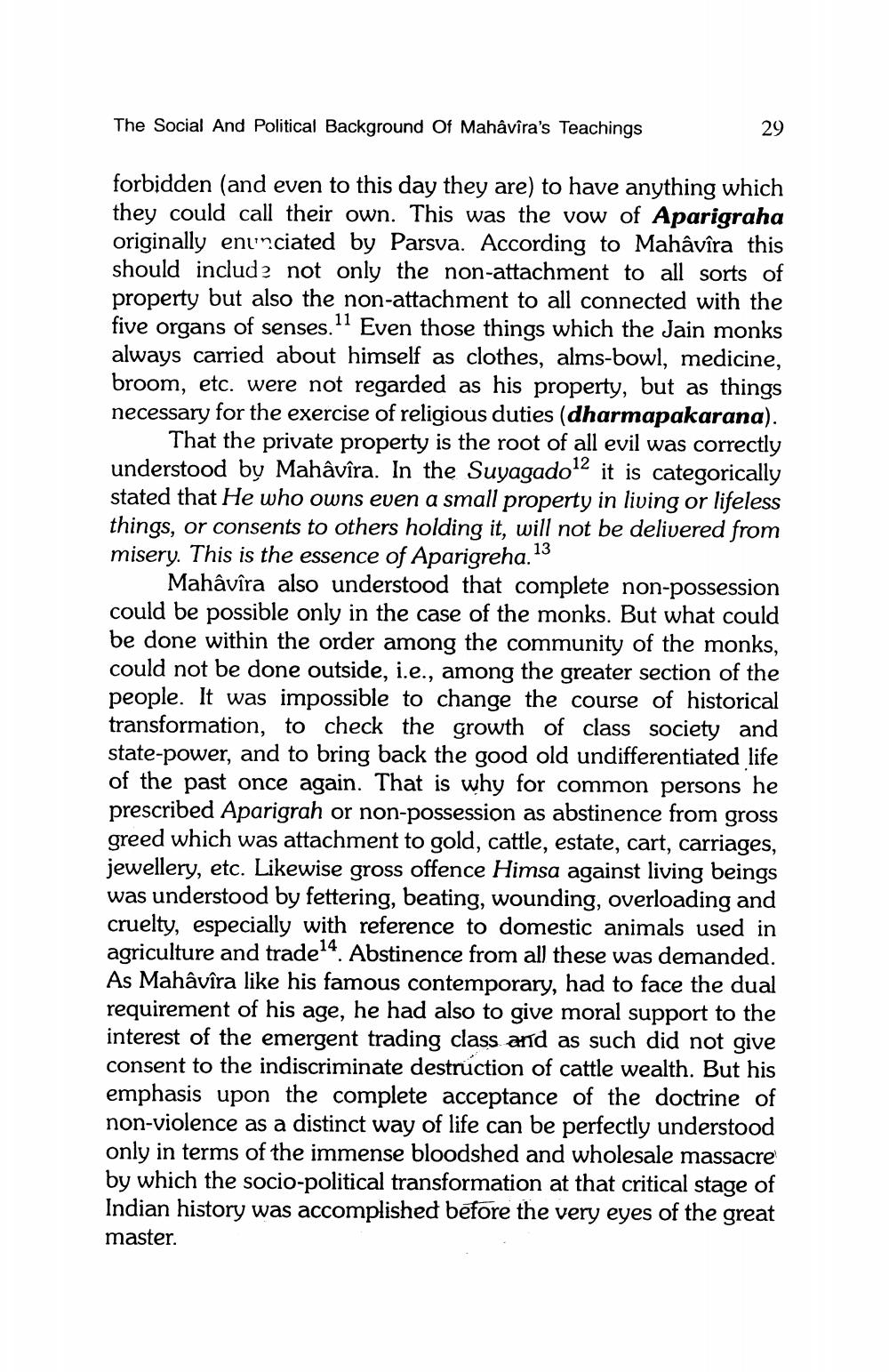________________
The Social And Political Background Of Mahâvîra's Teachings
29
forbidden (and even to this day they are) to have anything which they could call their own. This was the vow of Aparigraha originally enunciated by Parsva. According to Mahâvîra this should includz not only the non-attachment to all sorts of property but also the non-attachment to all connected with the five organs of senses. 11 Even those things which the Jain monks always carried about himself as clothes, alms-bowl, medicine, broom, etc. were not regarded as his property, but as things necessary for the exercise of religious duties (dharmapakarana).
That the private property is the root of all evil was correctly understood by Mahâvîra. In the Suyagado12 it is categorically stated that He who owns even a small property in living or lifeless things, or consents to others holding it, will not be delivered from misery. This is the essence of Aparigreha.13
Mahâvîra also understood that complete non-possession could be possible only in the case of the monks. But what could be done within the order among the community of the monks, could not be done outside, i.e., among the greater section of the people. It was impossible to change the course of historical transformation, to check the growth of class society and state-power, and to bring back the good old undifferentiated life of the past once again. That is why for common persons he prescribed Aparigrah or non-possession as abstinence from gross greed which was attachment to gold, cattle, estate, cart, carriages, jewellery, etc. Likewise gross offence Himsa against living beings was understood by fettering, beating, wounding, overloading and cruelty, especially with reference to domestic animals used in agriculture and trade14. Abstinence from all these was demanded. As Mahâvîra like his famous contemporary, had to face the dual requirement of his age, he had also to give moral support to the interest of the emergent trading class and as such did not give consent to the indiscriminate destruction of cattle wealth. But his emphasis upon the complete acceptance of the doctrine of non-violence as a distinct way of life can be perfectly understood only in terms of the immense bloodshed and wholesale massacre by which the socio-political transformation at that critical stage of Indian history was accomplished before the very eyes of the great master.




